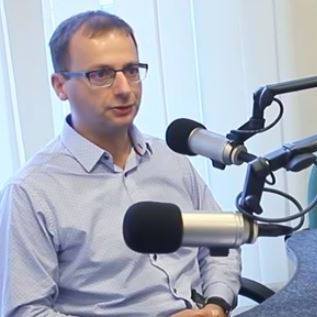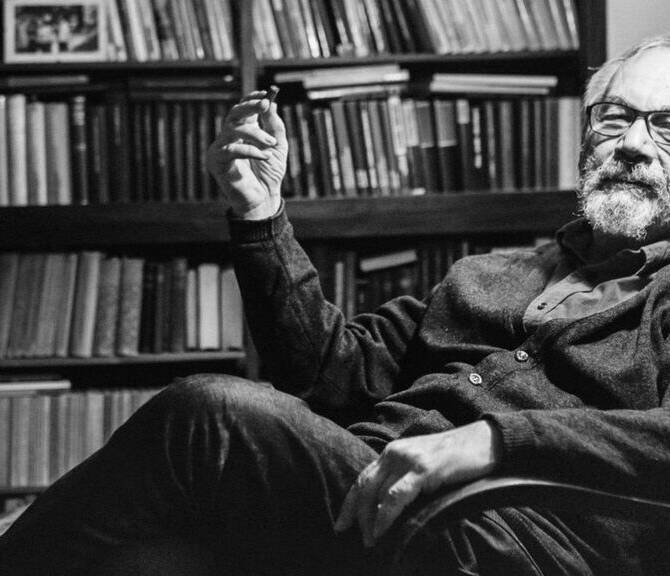Poland – Last Monday Poland commemorated the 78th anniversary of the start of the Warsaw Ghetto Uprising with the participation of the Polish and Israeli foreign ministers and more than 50 Polish and Israeli ambassadors from around the world. At noon, sirens were sounded in Warsaw, and Polish President Andrzej Duda, in a speech in front of the Monument to the Warsaw Ghetto Heroes, honored those Polish Jewish fighters who “chose to die with weapons in their hands and did not accept death in concentration camps, they did not accept death in gas chambers and wanted to fight till the very end.” The commemoration was symbolized by daffodils, flowers that the last living commander of the uprising, Marek Edelman (1919–2009), received every April 19 from an anonymous person.
First major city uprising in occupied Europe
The Warsaw Ghetto Uprising was the first major uprising in a city in Nazi-occupied Europe. The Grossaktion – Great Action – to liquidate the remnants of the ghetto created by the Germans in the autumn of 1940 was supposed to last three days, but it took the SS troops and their auxiliaries twenty-eight days to overcome the resistance of the Jewish fighting organizations, although these were low in numbers, with about a thousand fighters. After the failure of the lightning liquidation plan under the command of SS-Oberführer Ferdinand von Sammern-Frankenegg, Heinrich Himmler entrusted the leadership of the operations to SS-Gruppenführer Jürgen Stroop. After the war Stroop was sentenced to death for his crimes and executed in Warsaw in 1952.
The deportations of summer 1942 and the final liquidation order of February 1943
The liquidation of the ghetto had been ordered on February 16, 1943, by Reichsführer-SS Heinrich Himmler (the head of the SS and also of all German police forces, including the Gestapo). The deportation of Jews from the Warsaw ghetto to German extermination camps, in particular to the Treblinka extermination camp, began in July 1942. Aktion Reinhard, aimed at killing all Jews and Roma in the General Government – an entity created by Germany on the part of Poland’s territories conquered in September 1939 that was not annexed to the German Reich or taken over by Germany’s Soviet ally – had begun in March 1942 and was to last until October 1943. The mass deportation of Jews from the Warsaw ghetto took place from July 22 to September 21, 1942, with the help of the Judenrat (the Jewish council) and members of the Jewish police (a body created by the Germans) who had been promised by the Germans that they and their families would not be deported. To avoid provoking resistance, the Germans also tried to make it appear that this was a resettlement to labor camps in the east, which was made plausible by the fact that the ghetto had up to that point been used for low-cost production for the war effort, even though many of its inhabitants were already dying there before the Final Solution due to mistreatment, overcrowding, and the terrible deprivations imposed by the occupiers. With the deportations in the summer of 1942, by January 1943 the population of the Warsaw ghetto had already fallen from 450,000 to about 70,000. When the Germans tried to resume deportations on January 18, 1943, they encountered armed resistance for the first time. The fighting lasted four days and forced the aggressor to withdraw. It was in this context that the ghetto was ordered to be emptied of its inhabitants, in an operation that was to begin on April 19, 1943.
The tragic events of 1942 seen from the ghetto
“So long as the ‘operation’ was in progress the populace was silent. They allowed themselves to be led to the slaughter like sheep,” Jewish ghetto chronicler Emmanuel Ringelblum wrote in his Notes from the Warsaw Ghetto (also known as the Warsaw Ghetto Archive, or Journal of Emmanuel Ringelblum), the result of a collective work carried out under his supervision until December 1942. Even worse, according to Ringelblum’s testimony, “The Jewish police had a very bad name even before the resettlement. The Polish police didn’t take part in the forced work press gangs, but the Jewish police engaged in that ugly business. Jewish policemen also distinguished themselves with their fearful corruption and immorality. But they reached the height of viciousness during the resettlement.” Ringelblum fled to the Polish side in January 1943 before returning to take part in the fighting in April–May. He was taken prisoner by the Germans but managed to escape and then hid in Warsaw with his wife and children. In March 1944, the Gestapo discovered his hideout and executed him and his family, alongside 35 other Jews and the Polish family that was hiding them.
From passivity to armed resistance
In December 1942, the ghetto chronicler described the change in attitude among the Jewish population, which had become aware of the fate of those brutally crammed into cattle cars at the Umschlagplatz: “Most of the populace is set on resistance. It seems to me that people will no longer go to the slaughter like lambs. They want the enemy to pay dearly for their lives. They’ll fling themselves at Them with knives, staves, coal gas. They’ll permit no more blockades. They’ll not allow themselves to be seized in the street, for they know that work camp means death these days. And they want to die at home, not in a strange place. Naturally, there will only be a resistance if it is organized, and if the enemy does not move like lightning, as [They did] in Kraków, where, at the end of October, 5,500 Jews were packed into wagons in seven hours one night. We have seen the confirmation of the psychological law that the slave who is completely repressed cannot resist. The Jews appear to have recovered somewhat from the heavy blows they have received; they have shaken off the effects of their experiences to some extent, and they calculate now that going to the slaughter peaceably has not diminished the misfortune, but increased it. Whomever you talk to, you hear the same cry: The resettlement should never have been permitted. We should have run out into the street, have set fire to everything in sight, have torn down the walls, and escaped to the Other Side. The Germans would have taken their revenge. It would have cost tens of thousands of lives, but not 300,000. Now we are ashamed of ourselves, disgraced in our own eyes, and in the eyes of the world, where our docility earned us nothing. This must not be repeated now. We must put up a resistance, defend ourselves against the enemy, man and child. ”[1]
The extermination of Jews by Nazi Germany
By that time, the ongoing extermination of the Jewish population by the German occupier was no longer a secret. Ringelblum made the following notes in his diary about the Treblinka extermination camp: Treblinki — The news about the gravediggers (Rabinowicz, Jacob), the Jews from Stok who escaped from the wagons…loaded with gold and foreign currency— the unanimous description of the “bath,” the Jewish gravediggers with yellow patches on their knees. — The method of killing: gas, steam, electricity. The news about Treblinki brought back by the investigators sent out by the families of those deported there. The story about the tractors: According to one version, tractors plow under the ashes of the burned Jews. According to another version, the tractors plow the earth and bury the corpses there [by covering them over]. Treblinki as the Jewish populace sees it — they become aware of the recent extermination. The Jews from Western Europe have no idea what Treblinki is. They believe it to be a work colony, and on the train ask how far it is to the “industrial factory” of Treblinki. If they knew that they were going to their death, they would certainly put up some resistance. They arrive carrying brand-new valises.[2]”
Escaping the ghetto
The mass deportations of the summer had been facilitated by the collaboration of the community leaders sitting in the Judenrat and the Jewish police, and also by the fact that the hostility of part of the Polish population and especially the danger represented by Polish informers (including for other Poles who ventured to help Jews) and the Blue Police (the Polish police force reconstituted under German command) made any escape complicated and dangerous for those who had no acquaintances among the non-Jewish Poles. The British Holocaust historian David Cesarani estimated that about 20,000 Jews managed to find refuge on the “Aryan” (as per the German terminology) / “Christian” (as per the Jewish terminology) / “Polish” (as per the Polish terminology) side during the great deportations of 1942. This is both a small and a large number, considering that the inhabitants of Warsaw themselves suffered hardships, albeit less severe than in the ghetto, often lived in cramped quarters, and risked summary execution along with their entire families (including children) if they were caught hiding or even just helping a Jew. Unfortunately, many of those Jews who escaped from the ghetto later died in the rubble of the Warsaw Uprising of August–September 1944.
Jewish armed organizations and the help of the Polish Home Army (AK)
By the end of 1942, the two fighting organizations formed by the younger generation had taken control of the ghetto, pursuing collaborators. These were the left-wing Jewish Combat Organization (Żydowska Organizacja Bojowa, ŻOB), led by Mordechai Anielewicz and Marek Edelman, with about 600 members, and the right-wing Jewish Military Union (Żydowski Związek Wojskowy, ŻZW), led by Paweł Frenkel and Dawid Moryc Apfelbaum, with about 250 members. Both organizations prepared for the fighting by extorting funds from Jews who had made money from trading with the Germans or smuggling and from members of the Jewish police, and by using those funds to purchase weapons from the Polish resistance, which also provided ammunition and trained Jewish fighters to prepare Molotov cocktails and homemade explosives. Historians remain divided as to whether the help given by the AK, the Polish Home Army, and especially that given selflessly, was sufficient. It can be said in defense of the AK that it was itself poorly equipped, and that the uprising it organized in August–September 1944, when Soviet troops were approaching – and when it was better prepared for large-scale action – led to the almost total destruction of Warsaw and resulted in about 200,000 deaths on the Polish side, of which about 90% were civilians. Even today, it is not uncommon to meet Poles who believe that the 1944 uprising was a folly, and this is how it was presented by post-war Communist propaganda, as the AK, the armed wing of the government in exile in London, was fought by the Soviets and their Polish Communist allies from 1944 onwards.
The point of view of the SS officer who directed the liquidation of the ghetto
The writer and journalist Kazimierz Moczarski, an AK fighter locked up after the war by the Communists in the same cell as Jürgen Stroop, the SS commander who had led the liquidation of the ghetto in April–May 1943, reports the following words of the SS officer about the attitude of the Poles:
“From the first and second day of the Great Action, the main fighting group consisting of Jews was mixed with Polish ’francs-tireurs’. It withdrew to Muranowski Square, where it was reinforced by other ‘Aryans’. They were in constant contact with the Home Army, I think through the sewers and special underground passages near the ghetto walls. I had a lot of trouble because of that. We fought a fierce battle on Muranowski Square. The Poles not only fought in the ghetto, but also attacked us militarily in the outer areas. Already on the evening of April 19, Home Army soldiers tried to blow up the ghetto wall on Bonifraterska Street. These Polish actions came to nothing, but Hahn had three SS men killed. Two soldiers of the Home Army and some Polish policemen were also killed there. In the following days, the Poles also took part in the action. I have to admit that it was very disturbing for me. Our propaganda to drive a wedge between Jews and ‘Aryans’ was not working! ”
The meaning of the month-long heroic struggle of the Jewish ghetto fighters was expressed by Izrael Chaim Wilner (pseudonym Jurek), a soldier of the ŻOB: “My nie chcemy ratować życia. Żaden z nas żywy z tego nie wyjdzie. My chcemy ratować ludzką godność.” (“We don’t want to save our lives. None of us will get out of this alive. We want to save human dignity.”). Marek Edelman, who took command of the uprising after the death of the other leaders of the fighting organizations and the suicide of Mordechai Anielewicz on May 8, 1943, was one of the few survivors, and he later participated in the Warsaw Uprising of August–September 1944.
The AK’s point of view
Maria Kann, a Polish activist involved in the world of underground culture during the war, but also in helping Jews, lived near the ghetto in the years 1942–43. In her report Na oczach świata (Before the Eyes of the World) published by the AK Information and Propaganda Bureau in October 1943, she described the complicated relations between Jews and Poles under the German occupation and during the liquidation of the ghetto:
“The Jewish masses were rather reluctant towards Poles. More often than not, they were in contact with the scum of humanity, those who made profit from their misfortune, providing them with food at high prices and buying things from them for nothing. The [Polish] blue policemen were for them the same as the [German] gendarmes, executors of German law. (…) Unlike the Jewish masses, the fighters strongly emphasized their solidarity with the Poles. (…) The Jews felt and understood that the sympathy of the whole society was on their side. The Poles did not express their feelings only in words. (…) Obeying the orders of the underground authorities and their human feelings, the Poles provided armed help and assistance in escapes. They hid Jews at the risk of their lives, because the Germans killed both the Jews they found and those who gave them shelter. (…) The scum of society – not Polish, not Jewish, not German, but human scum in general, who serve every master – had turned the misfortune of the Jews into a source of new income. For Judas’ silver coins, they helped catch people escaping from the ghetto. There are no words harsh enough to condemn those traitors. There is no place for them in free Poland! ”[3]
After the war, SS commander Jürgen Stroop told Kazimierz Moczarski: “I’m wondering what position to take at the trial. If I have to reveal the truth about the ghetto uprising, I will say that the Jews and the Poles who helped them were heroes. But to state this truth publicly, I must receive payment in the form of life in prison, not the gallows. And if I feel that I must be hanged no matter what… I can’t rule out resorting to lying. And I will testify that the whole Jewish resistance was a piece of shit and a toy, that the girls of the Haluzzen movement were cowardly hysterical types and that the Poles looked on with indifference and even approval at the liquidation of the Jews… ”[4]
[1] Ringelblum, Emmanuel. Notes From The Warsaw Ghetto: The Journal Of Emmanuel Ringelblum (p. 372-73). Normanby Press. Kindle Edition.
[2] Ringelblum, Emmanuel. Notes From The Warsaw Ghetto: The Journal of Emmanuel Ringelblum (p. 366-67). Normanby Press. Kindle Edition.
[3] Passage quoted in Grzegorz Górny’s book: Sprawiedliwi – Jak Polacy ratowali Żydów przed zagładą (The Righteous – How Poles Rescued Jews from the Holocaust)
[4] Kazimierz Moczarski – Conversations with an Executioner (excerpts from the Polish version translated into English by the author of this article)




